Winter vs Summer Camping: My First Full Winter Outdoors

This site has no affiliate links or sponsorships – I don’t get paid or make money from any of the links here. Every bit of content is created and funded by me alone, with the goal of providing an honest and helpful resource for the camping community.
This is not an advert and I haven’t been paid to write any of this. I simply want to share information about a product I use and want to review – and I that others find really helpful.
Now that we’re into April, I’m hoping winter has become a distant memory. I’m based in Dorset, in the south of England. While this winter wasn’t particularly harsh, it felt long and gloomy. Temperatures never dropped too far, but since New Year, the cloud cover has been relentless- grey skies that just wouldn’t shift and no sun for months.
But then April arrived. In just a few short weeks, the skies cleared, the sunshine returned and daytime temperatures jumped well above average. It felt like spring had sprung overnight.
So I thought that now would be a good time to talk about the difference I’ve noticed between camping in the depths of winter and the height of summer. I know we have spring and autumn too – but for this post, I’m sticking to the extremes of deepest winter and full summer.
As you probably know, there are really just two big differences between these seasons: the length of the days and nights, and the weather (which includes temperature, wind and rain). Everything else tends to fall into those two categories.
Here in Dorset, we have one of the mildest climates in the UK and most of my camping takes place locally for ease and convenience.
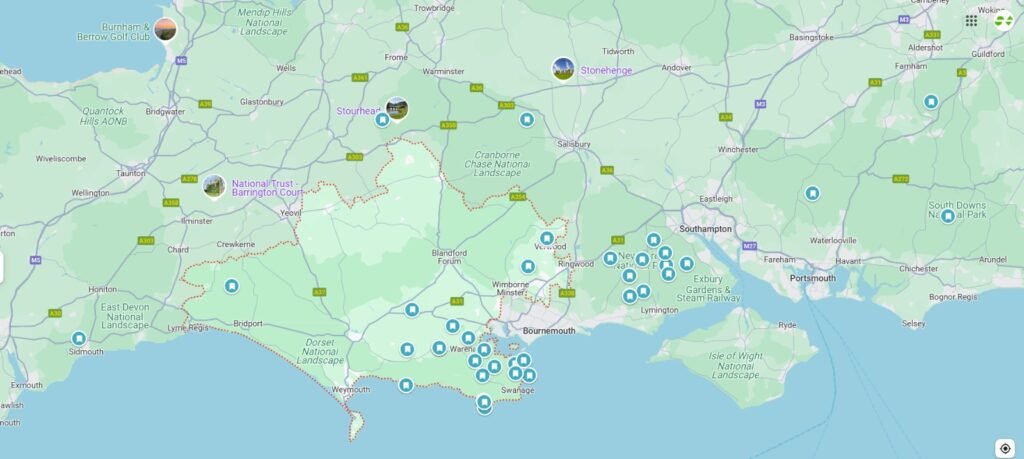
I’m not an experienced winter camper – not yet anyway – but this past winter I decided to do things differently. In the past, I’ve basically hibernated when the clocks went back or the temperature dropped below a certain point. Like a bear, I wouldn’t reappear until the days were longer and the weather more bearable.
Upgrading My Kit
Late last year, I decided to upgrade my gear. I purchased an OEX Phoxx 1 v2 tent, a Robens’ sleeping mat and an Alpkit SkyeHigh 700 sleeping bag. All have made a world of difference.
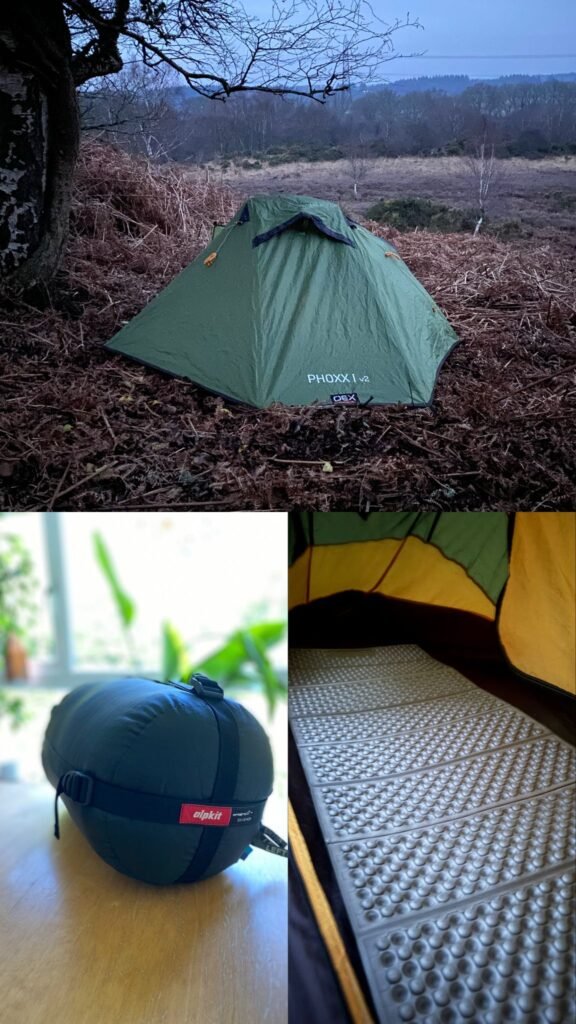
Thanks to that setup, I’ve been able to camp all winter. And yes, I’ve been cold. I had to double-bag during the coldest nights as my sleeping mat only has an R-value of 4.5. On one occasion the cold ground began to seep through as temperatures dipped below freezing. Instead of buying another mat, I used my Mountain Warehouse summer sleeping bag inside my 3-season Alpkit bag – I read this useful tip somewhere and it worked.
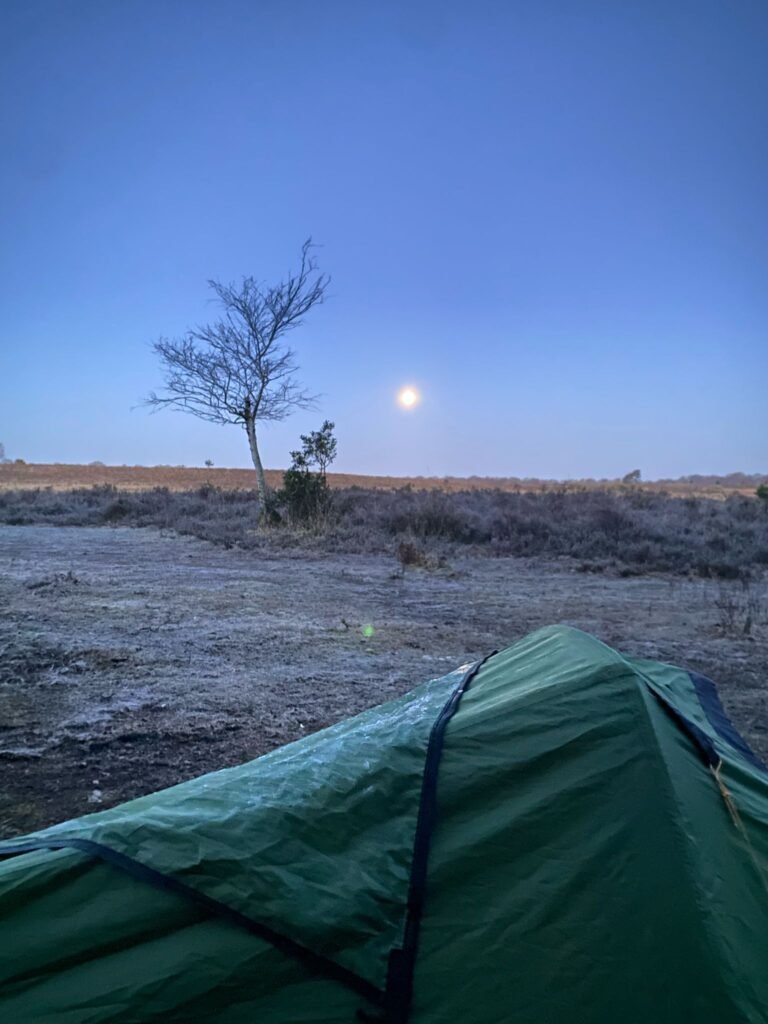
The two bags combined weight is around 2kg and they have kept me warm. Add in the shelter of the tent and a woolly hat and thermals, and I’ve been pretty toastie. In the past, I’ve relied on a heavy 4-season bag weighing 2.3kg and a Dutch Army hooped bivi. The Gore-Tex bivi is great for keeping rain off, but it sits right on top of you and your sleeping bag, allowing the cold to penetrate and it doesn’t trap much warmth. Plus, it’s heavy at around 1.7kg.
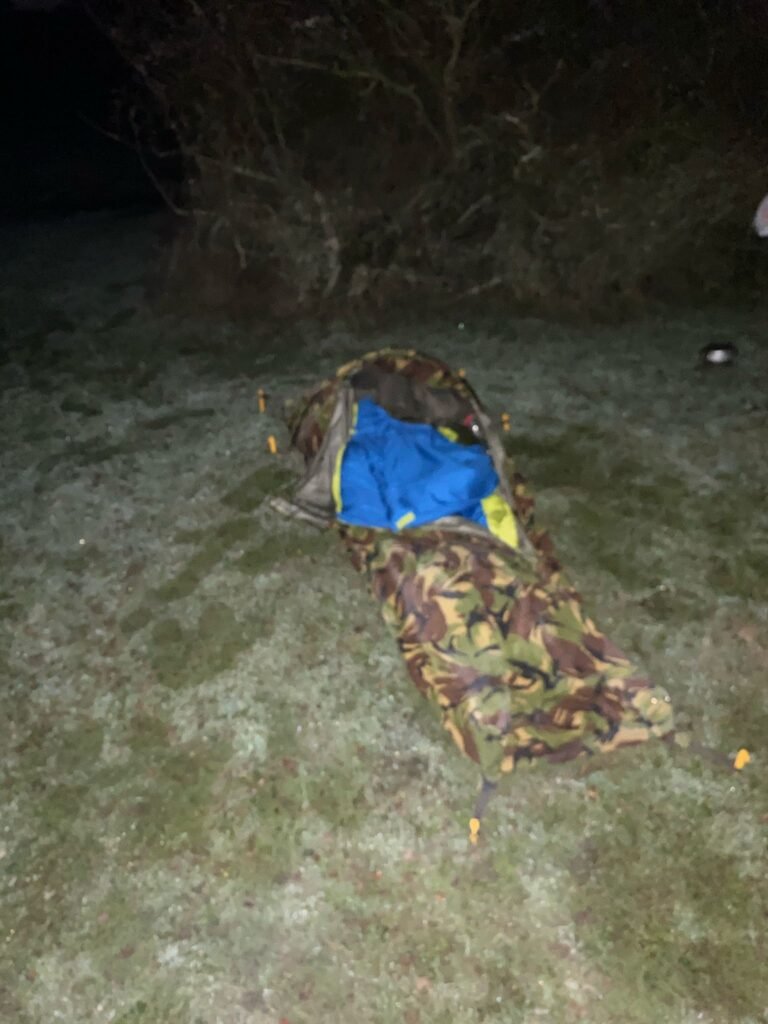
So having more specialized gear has made a massive difference.
The Long Nights
Aside from the temperature, the length of the nights is without a doubt, the most noticeable difference between winter and summer camping.
I live in the UK, where temperatures can fluctuate between days and even hours. But no matter the temperature, the length of the night stays pretty consistent for the season. In winter, I’ve spent up to 14 hours inside the tent – eating, reading and sleeping. That’s a long time in a small space.
I’ve been caught out more than once by how early it gets dark. On one trip to St Aldhelm’s Head, I lost the path while crossing farmland and found myself eating a sandwich on a bench in the dark. I then had to navigate the valley of the Steps in pitch-black with a head torch. The mist soon rolled in as I reached the cliff tops. I had a quick look around for a spot, but ended up pitching the tent right on the first patch of flat grass I saw. It wasn’t dangerous and I was in no danger of falling off the cliff. The biggest issue was tripping or twisting an ankle.
Once the mist cleared during the night, I realised I’d camped near a property with its lights visible through the mist. I had no idea it was there when I made camp and I hadn’t checked the maps well enough, that was because I was planning to camp a little further along the coast.
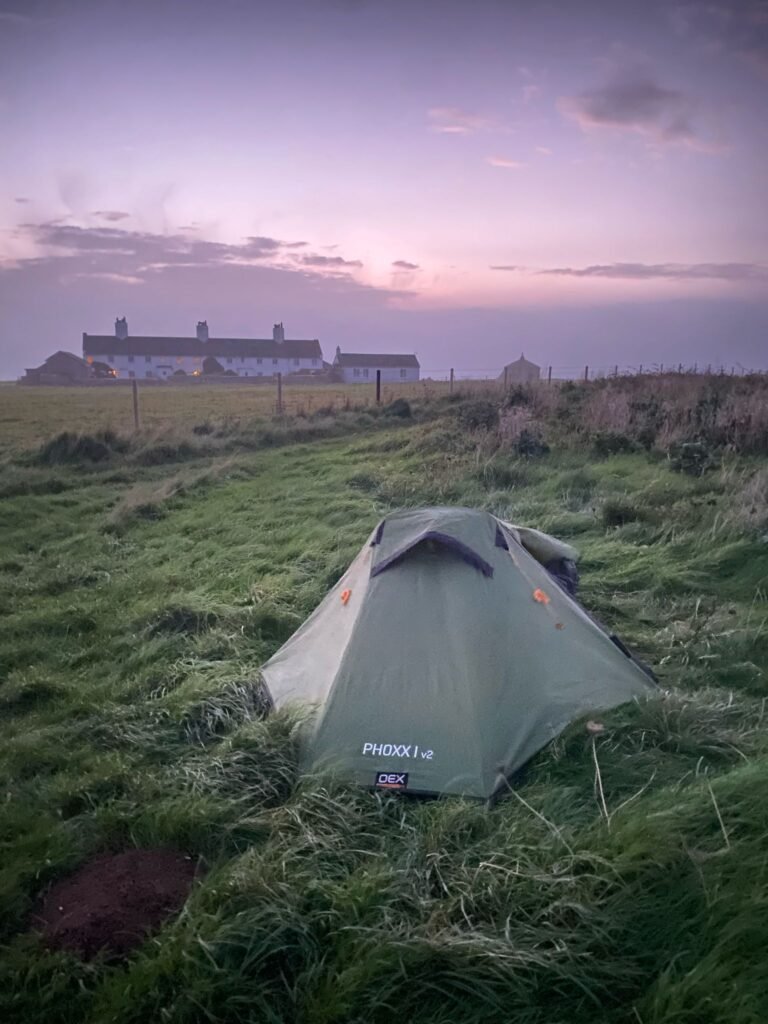
Experiences like that have taught me to arrive earlier. When I’ve managed to reach camp around 4pm, I’ve often been zipped up in the tent by 16:30-16:45, and not emerging again until 8am (except for a pee).
Those long hours would have been miserable in the Dutch bivi. The tent has been a sound investment.
The Weather
The UK is known for its unpredictable weather. It rains often and a lot. It’s windy, and it can be surprisingly mild one night and freezing the next.
On a recent camp to Lewesdon Hill, which is the highest point in Dorset. I expected it to be chilly on the high ground, but I ended up sleeping in a T-shirt in my sleeping bag. Temperatures were in the high single figures. On the way home, I passed through lower ground and saw fields covered in a thick frost.
I’m using a bivi again now that the weather is improving, but over winter, the tent was a game changer. Not just for the warmth – but for comfort. When it rained, My gear and I stayed dry. Yes, I could’ve used a tarp with the bivi or hammock (and sometimes I have), but it’s just not the same.
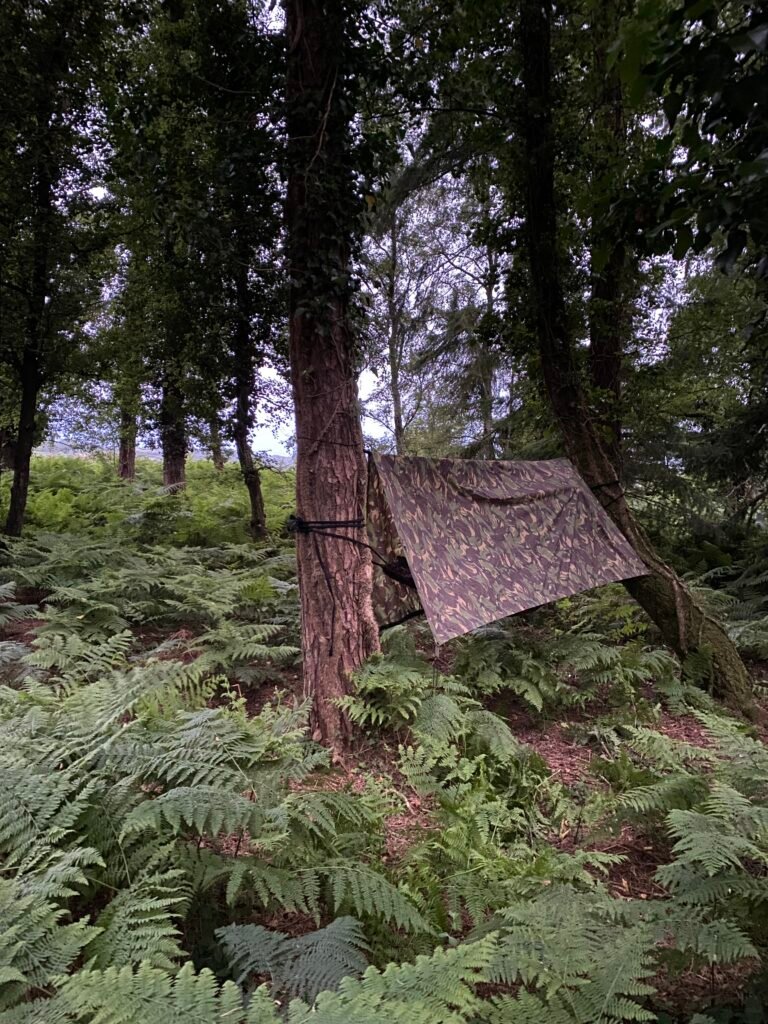
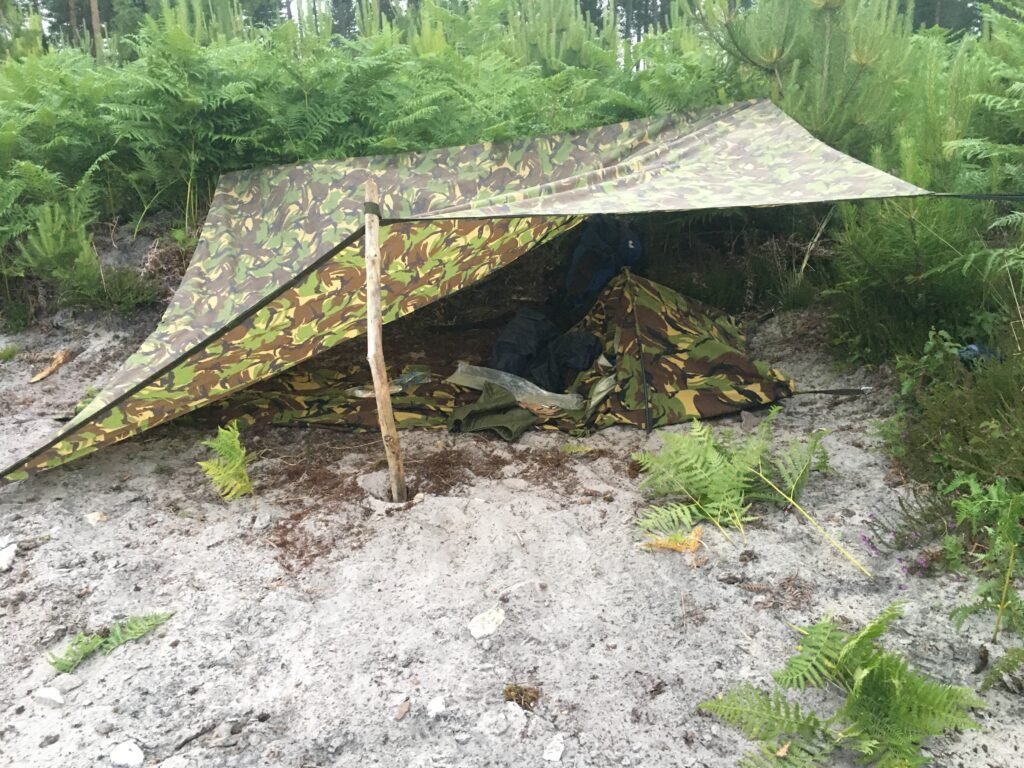
It’s also noticeably warmer inside the tent. I’ve read that tent interiors can be up to 10°C warmer than the outside, especially in high-end, 4-season expedition tents. My £65 Phoxx 1 v2 isn’t quite at that level, but I’ve definitely noticed the difference.
Final Thoughts
This winter, I managed around 13–14 nights out in the Phoxx 1 v2 – in all weathers and temperatures. And honestly? I’ve loved every minute.
It’s opened up a whole new season for me. In the past, my old kit was just enough to get by if the weather was dry and just above freezing. Anything colder or wetter and I wasn’t going to be heading out.
Now, with better gear, I’ve been able to get outside all winter long. I’ve really enjoyed this past winter. That’s something I wouldn’t have said this time last year.
Please leave no trace.
If you have any questions, please don’t hesitate to contact me via social media or the contact form which can be found on the contact page.
Your feedback is important. Let me know if you enjoyed the blog – and even if you didn’t, I’d love to hear your thoughts.
Thanks for taking the time to read the article.
Many thanks
Dan
#wintercampinggear #alpkit #robensoutdoors #phoxx1v2 #tent #sleepingbag #sleepingmat


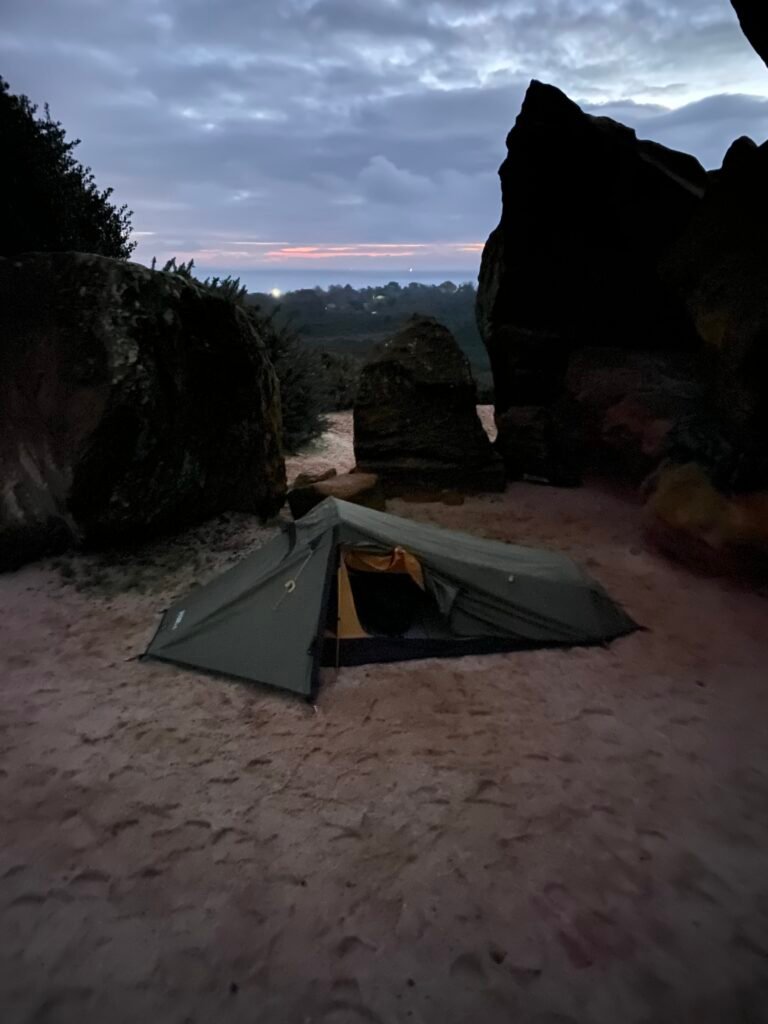


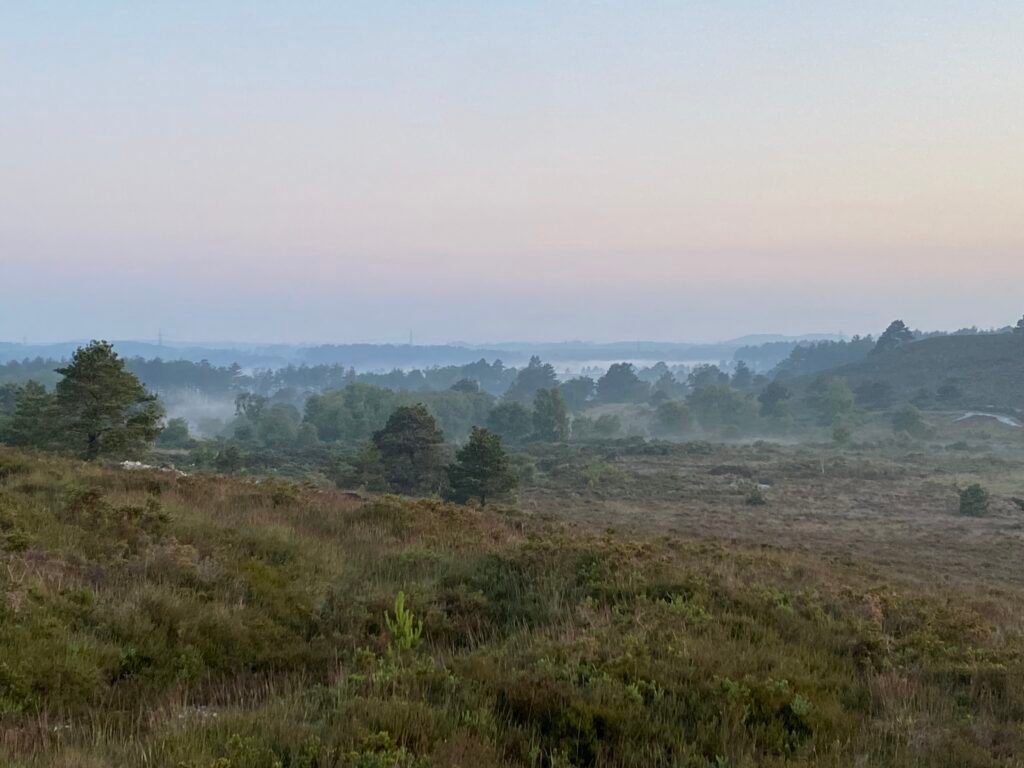
Responses